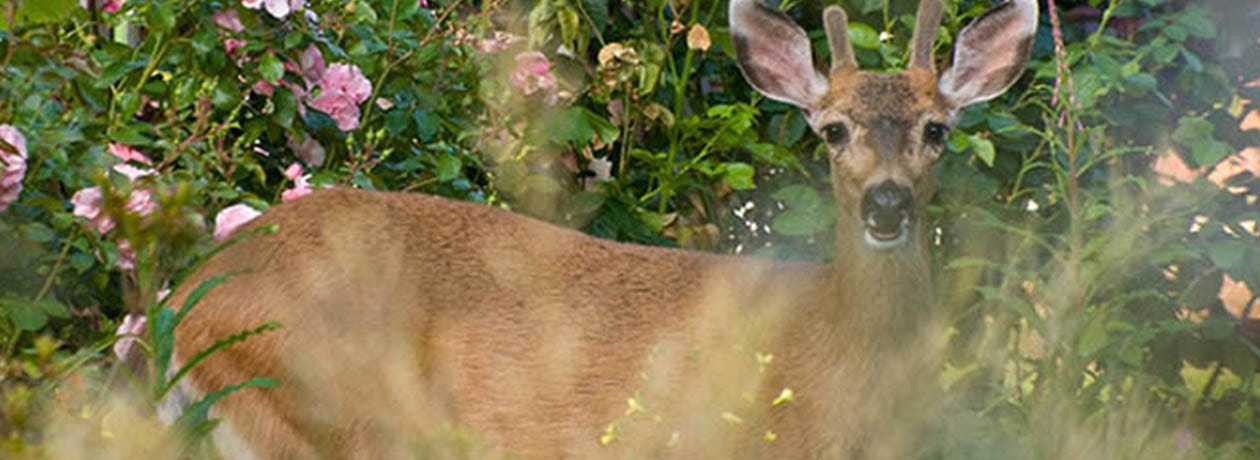Deer-Proofing a Lawn - Save Your Flowers, Bushes and Trees

Deer are a problem, especially around mating season. They cause car accidents, resulting in injuries (for them and humans!) and costly damages. They also destroy plants and trees, ruining landscaping.
The problem isn’t just isolated to rural areas. The overabundance of deer and their increased aggressiveness during the mating season is causing major problems in the suburbs as well, so don’t be surprised when your customers come asking for help.
It’s not unheard of for these areas to support a large herd of deer, which creates a problem for homeowners, renters and business property managers. They destroy vegetation, eating new shoots, raiding gardens and munching fruits and flowers. A herd of deer also creates traffic problems in the suburbs, especially at dusk during the mating season.
Deer-Proof Plants: Beware
Any Internet search for deer proof flowers will bring back a slew of results. From ferns to shrubs, there are plenty of plants that people claim deer won’t touch. As a retailer, you can stock up on deer proof plants, but keep a few things in mind before you order:
- Watch Your Words—Deer proof plants should really be called deer resistant: Depending on the time of year and their location, some otherwise deer proof plants will end up being deer dinners. There is no real “deer proof” variety of plant. This is especially true in the winter when resources run low. Also, if your customers plant these on regular deer pathways, they are certainly more likely to be eaten
- Plants Don’t Repel Deer—There is no such thing as deer repellent flowers or plants: Just because your customers plant a few deer-proof plants doesn’t mean they are now effectively protecting other plants. A deer-proof plant doesn’t emanate some sort of deer repellent qualities that will keep the deer away. The deer will still roam around, nibbling—and destroying—the other plants, even if they’re right next to deer proof ones.
- Choose Wisely—Some deer proof plants are more “deer proof” than others: Plants are often rated based on how often they are eaten. Stock ones that are rarely eaten, and suggest those to your customers struggling with visiting deer.
Best Course of Action
The best way to keep deer at bay is by employing several tactics that train deer to stay away from an area.
Safer® Brand and Havahart® offer a number of repellent options that can effectively train wild deer to avoid plants and certain locations.
- Deer Off®—This repellent can last up to three months at a time to stop deer. This solution is applied to the plant, and the deer stop eating flowers and plants. The repellent is reapplied as needed.
- Critter Ridder® Motion-Activated Animal Repellent & Sprinkler—These motion-detecting devices sense the approach of an animal and then spray it with a harmless, yet startling, blast of water.
- Havahart® Electronic Deer Repellent—These stakes carry a bait that attracts deer to them, and when they come in contact with it, they get a startling zap. This conditions the deer to stay away from these areas.
- Electric Fencing—While not a Safer® Brand product, a few lines of electric fencing from Zareba® can also be used to enclose a garden or whole yard. These fences can be effective at excluding other wildlife, too, depending on the height of the electrified lines.
